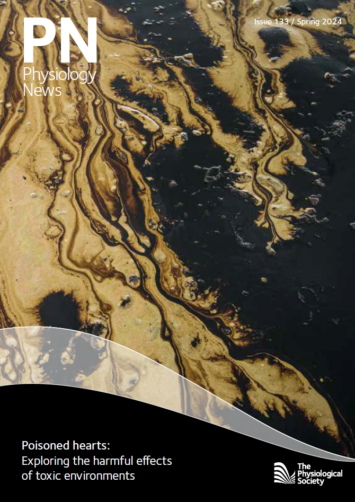
Physiology News Magazine
Experimental Physiology: Reflections on the transition to Gold Open Access
News and Views
Experimental Physiology: Reflections on the transition to Gold Open Access
News and Views
https://doi.org/10.36866/pn.133.13
Lucinda Periac-Arnold
Head of Publishing, The Physiological Society
The Physiological Society is committed to the principles of open science. From 1 January 2023 our journal Experimental Physiology transitioned from being a subscription journal to being a Gold Open Access (OA) journal. The change diversified our publishing offering, both to our membership and to the wider physiological research community, and marked an exciting evolution in EP’s 116- year history.
Open Access: One year on
Looking back at the first full year for EP as a Gold OA journal, there have been many learning opportunities for The Society at large as well as for the publishing staff behind the scenes and for the Editors involved. Throughout, our commitment to offering authors a first-class publishing experience with high-quality peer review at its heart has remained at the forefront. Our Editor-in-Chief, Professor Damian Bailey of University of South Wales has led that charge with characteristic passion and enthusiasm. Damian, along with our world-class EP Editorial Board, continuously support authors through their publishing journey, helping them to develop and hone their manuscripts in preparation for publication. In the move to OA, for the first time in its history (barring an anomalous year during the pandemic), EP reached over one million downloads. Those downloads reflect the global reach of our historic and prestigious title, with our readership spanning 220 out of 240 countries across the world1.
Challenges with Open Access
With the global reach and new audiences that OA brings, it also brings challenges. One particular challenge has been the introduction of an Article Processing Charge (APC). APCs can be paid by the author, the author’s institution, or their research funder, and can therefore create an additional barrier to submission for some authors. To address this, we stay in close contact with our publishing partner, Wiley, monitoring their already strong spread of Transitional Agreements globally. Transitional Agreements provide institutions with ‘read and publish’ access to journals, wherein they are able to access paywalled content, but also have a fund for authors based in the same institution to cover APCs without any cost to themselves2. As well as continuously monitoring these agreements, we also advocate for our communities where coverage can be improved and hope to see expansion in the future.
Open, accessible and rigorous
In a recent survey, more than 50% of our members identified OA as a strong reason for selecting a journal to publish in3. As the research publishing industry grapples with a rapidly expanding landscape of for-profit OA journals, it can be difficult for authors to know which OA journal to choose when submitting their manuscript. As a Society journal, EP prides itself on providing the physiology community with a trusted, high-quality, efficient and rigorous OA journal in which to disseminate their research. In addition, unlike the plentiful for-profit journals, profits from EP are reinvested back into the physiological community. By publishing in EP, you are supporting the future of physiology through funding The Physiological Society’s charitable activities, including training, grants and events.
We look forward to another exciting year ahead for EP and remember, as a member of The Society you are entitled to a 10% discount on APCs when submitting to EP.
Footnotes
1 Wiley Journal Insights
2 Always check with your librarian
3 Rated OA between 7 and 10 on a scale of importance in selecting a publication to submit to
